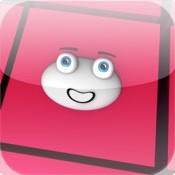Does listening to Mozart make you smarter? According to a landmark neuroscience research study out of the University of California, Mozart’s sonata for two pianos K448 can increase your spatial-temporal IQ scores by 9 points. While the duration of the effect on your brain is only about 10-15 minutes, the findings are nonetheless fascinating.
Spatial-temporal intelligence allows you to perform 3-D type manipulations on a mental image. It’s thought to be important for problems that arise in areas such as “mathematics, engineering, architecture, science, art, games (e.g. chess) and everyday life”.
This original study, published by Rauscher in the journal Nature, has given birth to what is now known as ‘The Mozart Effect‘. While many people have used the research to peddle exaggerated claims and products (like Mozart music tapes for parents to play in their child’s nursery), I think there is clearly something noteworthy going on with this type of music and the brain.
For example, further research shows that K448:
Significantly increases the speed & ability of rats navigating through mazes Strikingly diminishes the number of seizures in patients with epilepsy
What is so special about K448? How might it power up your brain? According to one Mozart authority, K448 is “one of the most profound and most mature of all Mozart’s compositions”.
A more scientific explanation, however, may have been uncovered by the work of Neurology Professor John Hughes. As he comments in the Journal of the Royal Society of Medicine:…we have found a long-lasting periodicity in the power of Mozart’s music, seen also with JS Bach and his son JC Bach. Furthermore we have just analyzed the melodic line and find that Mozart repeats his melodic line far more frequently than other well-known composers, but often in an ingenious manner reversing the notes. We feel that periodicity is the key or secret here and characterizes many brain and bodily functions.
In other words, Mozart’s K448 is characterized by a high degree of long-term periodicity. The music cycles, with elements recurring at regular intervals.
While I do think that certain types of music can have interesting and significant effects on brain function, I do not believe merely listening to Mozart can drive long term gains in brain power. (And if you look at the findings of the original ‘Mozart Effect’ research paper, the authors never claimed such).
Click here to listen to Mozart K448.
Piano practice and performance tips. Articles on all aspects of piano practice, memorization, performance and much more for music teachers, students and parents. Please note that majority of these articles are sourced from pianostreet.com and I do not take credit for these articles. My aim is to collate all of these useful resources so it is easy to access. Articles written by me will clearly state, by Richard Kant.
iPad App: Music Cubes and Music Tones


This morning I found a couple of free apps (Music Cubes and Music Tones) for my iPad.
Music Cubes is a music memory game where you have to memorize pitch patterns.
Music Tones is where you identify notes on the treble and bass staves.
I'm going to use Music Cubes with my 7th grade piano students to help them prepare for the memorization test in the aural section of the exam.
Music Tones will be great for students just learning to identify notes on the treble and bass staves.
I plan to have a lot of fun with these two apps with my students.
Teaching Rhythm
I was in Bunnings hardware store and found a useful way of using paint sample cards to teach rhythm. These sample cards are free so I asked if I could take 5-6 of each color. It took nearly an hour just to get the cards.
I bought some sparkly colored number stickers ($1.50 per pack) and stuck the numbers on the paint cards to form various time signatures. I taped the cards together to form a cube.
There are two other cubes made in the same way:
1. BEAT: crotchet, quaver, dotted crotchet, minim
2. PULSES: quaver and semiquaver
Then, I made number cards (1-12) to represent quaver pulses. I just stuck the number stickers directly onto smaller sized paint cards and numbers 1-4 on some clear cream bottle tops I found in my cupboard. These represent the beats.
Here are some pictures of the finished product and how to use:




I bought some sparkly colored number stickers ($1.50 per pack) and stuck the numbers on the paint cards to form various time signatures. I taped the cards together to form a cube.
There are two other cubes made in the same way:
1. BEAT: crotchet, quaver, dotted crotchet, minim
2. PULSES: quaver and semiquaver
Then, I made number cards (1-12) to represent quaver pulses. I just stuck the number stickers directly onto smaller sized paint cards and numbers 1-4 on some clear cream bottle tops I found in my cupboard. These represent the beats.
Here are some pictures of the finished product and how to use:




Crayola Dry Erase Activity Centre - My New Toy!
I was in K-Mart yesterday and found the most amazing new teaching toy for my studio. I was so excited that people around me thought I was a bit weird. Anyway, it's called 'Crayola Dry Erase Activity Centre'.
 The Dry Erase Activity Centre has a pocket on the side that allows the teacher to slip a worksheet inside and then use a dry erase marker on the top surface.
The Dry Erase Activity Centre has a pocket on the side that allows the teacher to slip a worksheet inside and then use a dry erase marker on the top surface.
I will certainly be using this in my private studio and in the primary school I teach at.
Cost: $18.00 AUD

I will certainly be using this in my private studio and in the primary school I teach at.
Cost: $18.00 AUD

Subscribe to:
Posts (Atom)